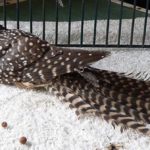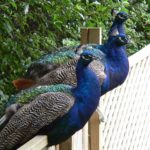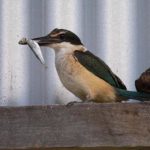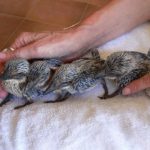Matakana’s home for unloved animals and injured birds
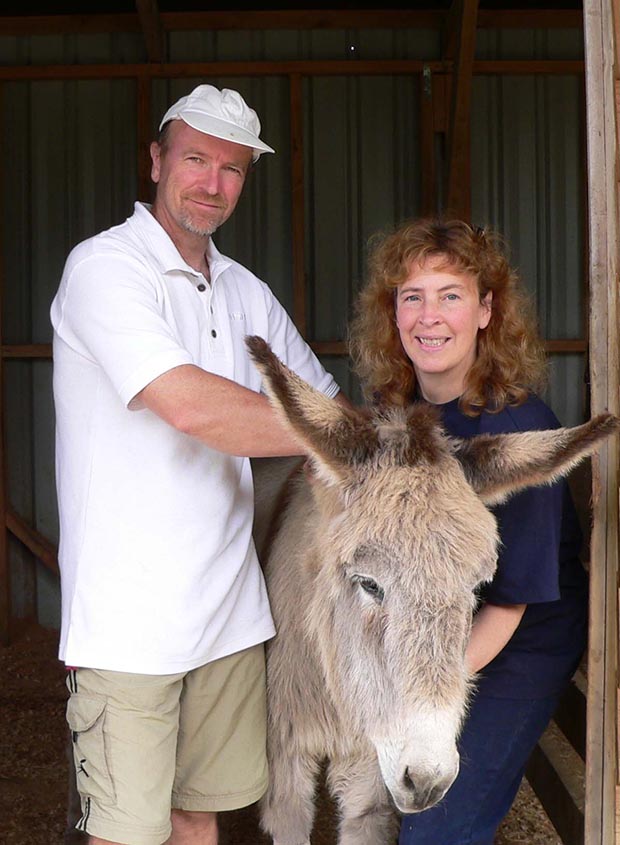
We visit a sanctuary for unloved animals and injured birds on a unique lifestyle block set up just for them.
This article first appeared in the January 2013 issue of NZ Lifestyle Block.
Words: Nadene Hall Photos: Shawn Bishop
Who: Shawn Bishop & Michael Dixon
What: The Animal Sanctuary
Where: Matakana, 75km north of Auckland
Website: www.animalsanctuary.co.nz
Facebook: Search for “The Animal Sanctuary” to get regular updates on their work.
Bartholomew, Bethlehem and Solomon were the first three animals rescued and brought to The Animal Sanctuary, and they’ve lived there just slightly longer than the couple who set it up. “Their trailer got here half an hour before we did, so they’ve been here longer than we have,” laughs Shawn Bishop. “As soon as I saw them I knew in a nano-second we were going to help them.
“I promised them they’d have a home for life.”
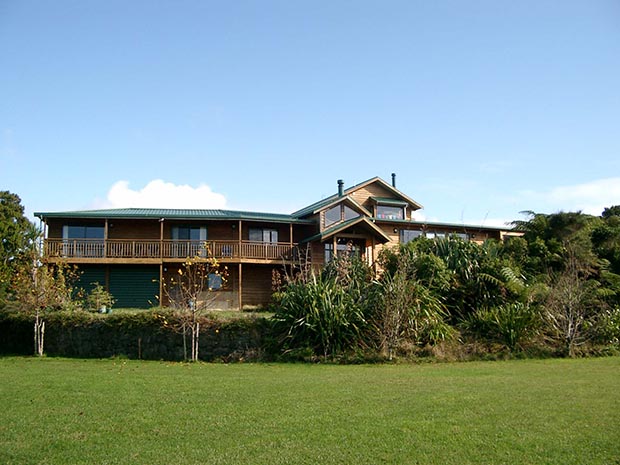
Giving unwanted animals a home for life was the key driver behind Shawn and partner Michael’s two and a half year quest to find the perfect block of land for their sanctuary, just north of Auckland.
“We knew two things: we knew we would take in abused animals that were hard to place, to be a last resort for some animals. The SPCA and the Humane Society do cats and dogs really well, so we wanted to help hard-to-place animals like donkeys and pigs.
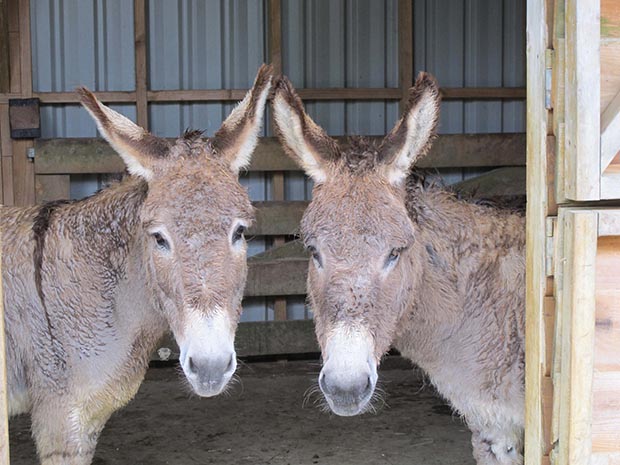
Solomon and Bartholomew: “These donkeys were locked in a distant paddock by a new owner who never went back, and when they were first discovered (their rescuers) thought they’d have to be put down. “Bethlehem (who died of old age) had given birth to Bartholomew and he’d never seen a human.”
“We also knew we were going to help native birds. We spent two years working with Sylvia (Durrant of SPCA Birdwing) and knew she needed a good release site.” It wasn’t until 2002, after spending what felt like “hundreds of hours” with real estate agents that they found the land that suited their very specific requirements.
“We had a plan. People say to us ‘you’re so lucky’ but we spent a lot of time looking for the right property. We needed it to be away from main roads with native bush around. We wanted to be organic, have some pasture for grazing, and we needed it to be private and safe for the animals.”
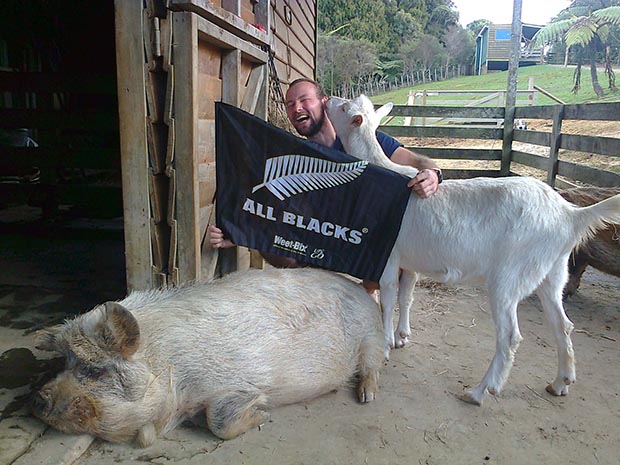
Mike and the animals show their true colours.
It was only by fluke that a friend spotted a ‘for sale’ ad in the back of a magazine. “It was a little private ad and it took nine months for it to become ours. We signed the papers on my 40th birthday.”
Rescuing animals is something Shawn has been doing since she was a child. “I think it’s in my DNA. Some people are born musical and it comes to them naturally. Others are sporty. Animals come to me naturally. I never played with dolls, it was always animals. Even as a child I’d take my pocket money and buy food for strays.”
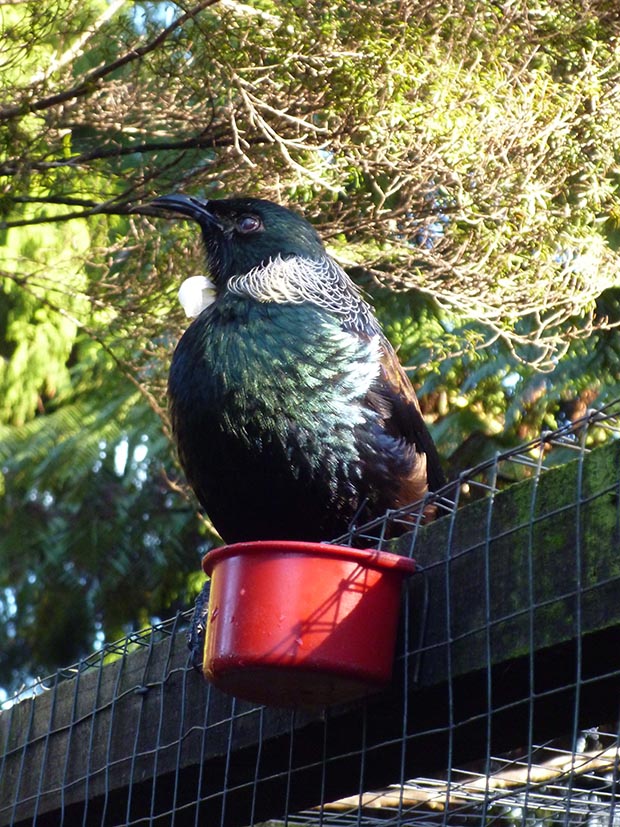
Fat Boy the tui.
She arrived in New Zealand from the USA after falling for a Kiwi and says she’ll always be grateful that the relationship brought her to this country. When she met Michael they set up home in the seaside suburb of Takapuna, but Shawn hankered to be back in the countryside.
It was while helping out Sylvia at Birdwing that they started to work out the criteria for what a sanctuary would need to accomplish.
- Long tailed cuckoo.
- Peacocks.
- Kingfisher.
- Baby kingfishers.
“We wanted to do something positive and we knew Sylvia really needed a safe release site. She could give (birds) emergency care but it didn’t help if they didn’t have a safe place to go. A rehabilitation centre was needed, and now we have lots of birds that come to us for rehab and release.”
The sanctuary has seven aviaries for native birds, including ones for small, medium and large birds so they can get flying exercise before release. One aviary is especially for kereru (native wood pigeons) and has a special self-release design that Shawn says they are especially proud of.
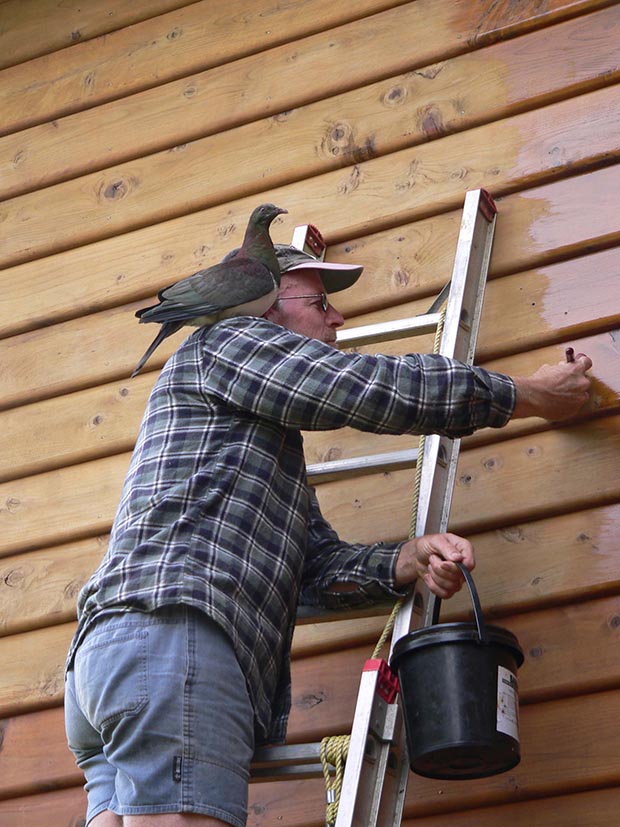
Najanja helping with a painting job.
“The aviary is 4-5m tall because they need to be able to practice gaining height in their flight. Before, our aviaries were only just taller than my head so they could fly up to low branches but in the wild their food is up much higher. “For a kereru to be released it has to meet certain criteria and flying high is the most important one.”
The kereru go through a three-stage rehab process before they’re released. First they need to be able to control their flight down without “dropping like a stone”; then fly straight across; and finally fly upwards. A series of ‘rehab’ perches made of natural wood at different heights in the aviary are used.
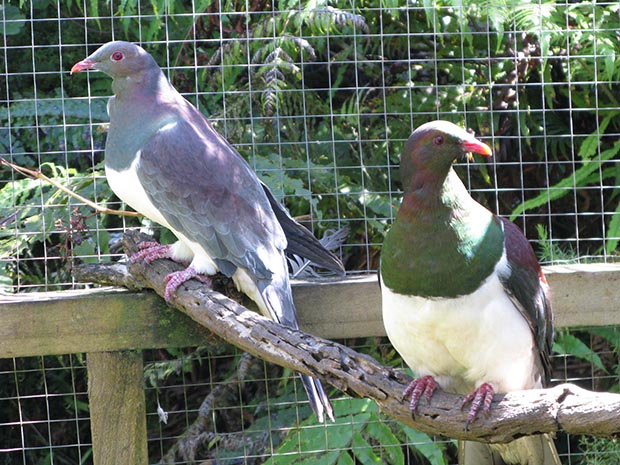
“When we raise baby birds we can’t help the fact that they habituate to us, the kereru think we’re their parents. So Michael will be outside paving and a kereru we raised will land on his head. They stick around for a while but once their hormones kick in they go off to find their own territory.”
“What’s cool about this is that when the pigeon can fly up to the top we open a ‘magic door’ so they can fly out. If they can’t fly up that high, they’re not ready.”
However, most of the pigeons have to be made to practice says Shawn. “Kereru are really lazy – they get a massive fruit salad served to them every day and they’ll happily just sit there and get fat, so we have to make them build up their strength. We make them fly because they need to be rehabilitated before release.
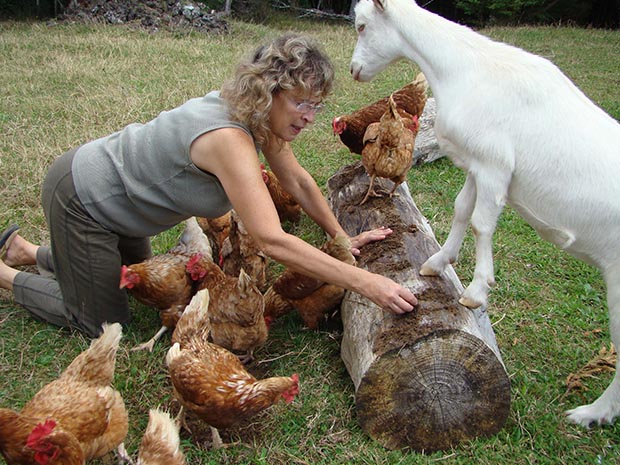
Shawn and Maddie with the hens.
“It serves a double purpose too, because they don’t like us. Unless we’re raising them from babies, we don’t want wild birds to habituate to people, so we go in, do the work, feed them and then get out – we don’t want them to actually bond with humans.”
Building specialist aviaries is an expensive business, especially when you have to keep some male birds separate from each other. On the day we spoke to Shawn, she’d just received news that The Animal Sanctuary – a registered charity – would receive an ASB Community Trust Grant towards the native bird side of its operation.
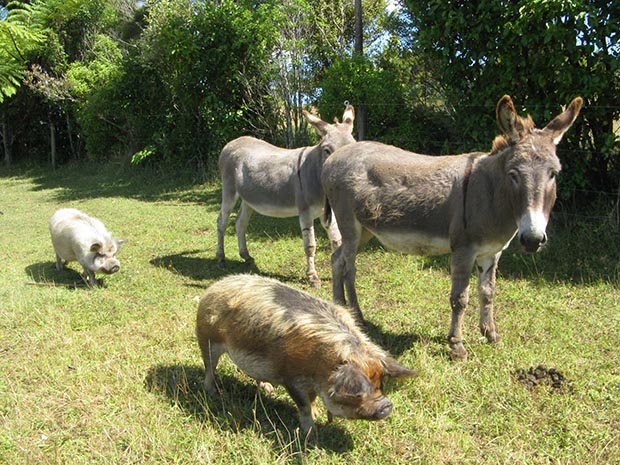
“It’s fantastic news. We have two separate accounts, one for the animals and one for the native birds. The grant is wonderful because native birds have a lot of vet bills. They can’t tell you where it hurts so they almost always need to be x-rayed.”
“Last year we had five injured male moreporks at once and we didn’t have enough rehab facilities. Receiving an ASB Community Trust grant is like my fairy godmother has come in and said ‘you can sleep tonight, you will get your owl aviaries!’”
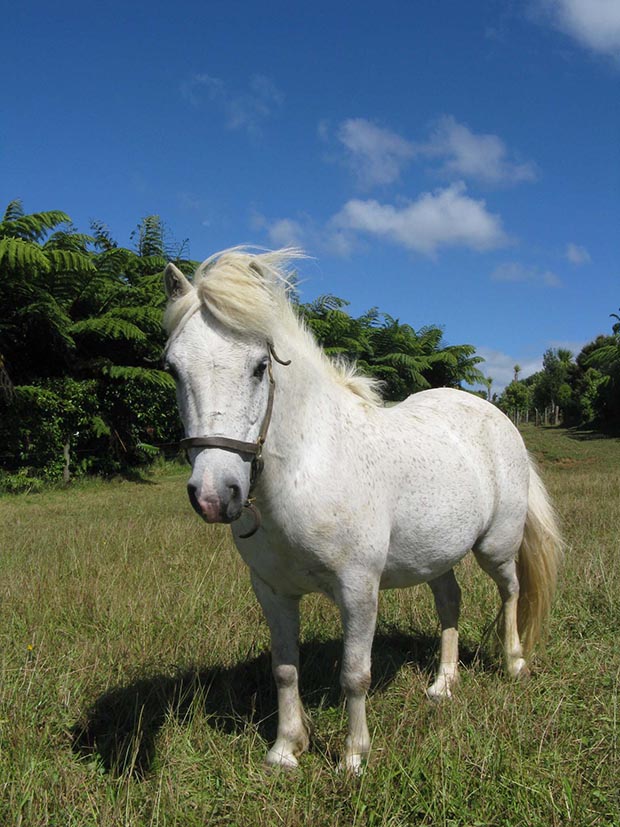
Romeo: “He was tortured by some teenage boys. It’s how we end up with violent criminals. People who enjoy hurting animals graduate to hurting children and escalate from there. If we don’t have negative consequences when they’re first doing this there’s nothing to interrupt the cycle. Worse, judges say ‘it’s only an animal’ and impose minor fines. But I say it’s an animal now, it’s a human later.”
Their work is made easier thank to local vet Ross Lynch of Vet Farm & Pet Clinic in Warkworth. “We work with a wonderful vet who’s really into native birds. It’s a partnership, we couldn’t do it without Ross. He does extraordinary things for our native birds.”
Shawn and Michael have currently filled up their limited grazing area with rescue animals so now they tend to rescue and rehome animals as quickly as possible. “We joked early on about how we would have to go looking for animals that needed rescuing, but we never had to do that.
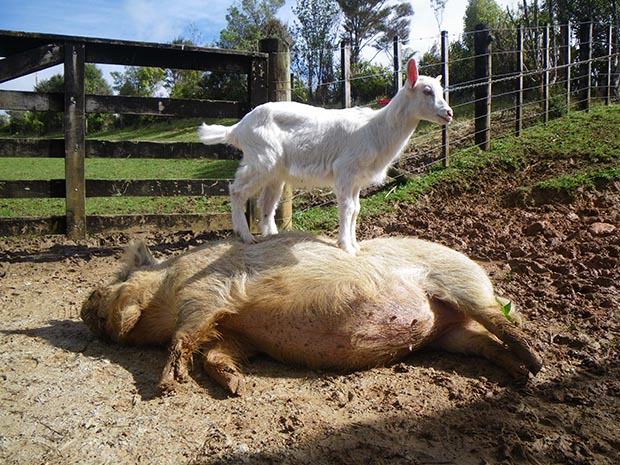
Queen of pig mountain!
“We’ve been going for 10 years now and with the amount of pasture we have, we are at capacity for grazing and that’s been hard for me. We’ve had to move to rehoming a number of animals – some we will rehab first, some we rehome directly. We’ve got a great network on Facebook.”
Michael works full-time on the farm and occasionally takes on contracts related to his former role in advertising. Shawn works off the farm part-time to help fund everything. They have a group of volunteers who also help out, and gratefully accept donations from those keen to support their work.
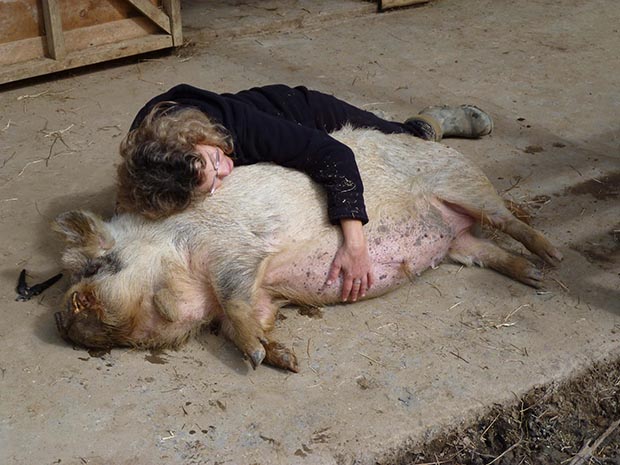
Cuddles with Jose.
“I call myself semi-retired – the idea was to retire – but there are massive expenses so I still do part-time work. Like any working mother, it’s challenging when you’ve got babies at home but it’s necessary.
“All donations go straight to the animals – we don’t live on it or give ourselves salaries, and it doesn’t pay for our own food, clothes or anything like that. The sanctuary is a registered charity so it’s been checked out. Donations are tax claimable so you can get 30% of your money back from the Government.”
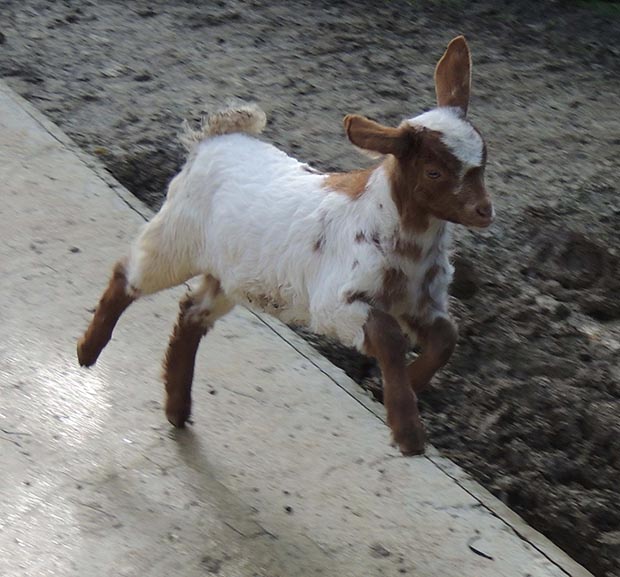
Lucky and Dulche: “Lucky was at the abattoir to be killed but a worker plucked him off the line to keep their grass down, but then once they built a house they didn’t need him. “Dulche is from way up in the Far North. She was found trapped in a drainage ditch in water up to her neck. A kind man took her home and she’s now our newest baby.”
The volunteers include locals who help out and wwoofers who stay on the farm, but it is hard work says Shawn. “The volunteers are really helpful, we couldn’t do it all on our own. Some people want to just come and cuddle animals, but we need real workers.
For regulars Georgie, Sue and Allie, it’s a lot of scooping up poo, mucking out stables, picking up poo in pastures, scrubbing aviaries, and if we have baby penguins then it’s fishy poo. We’re basically cleaning much of the time and a lot of what we do is to do with poo!”
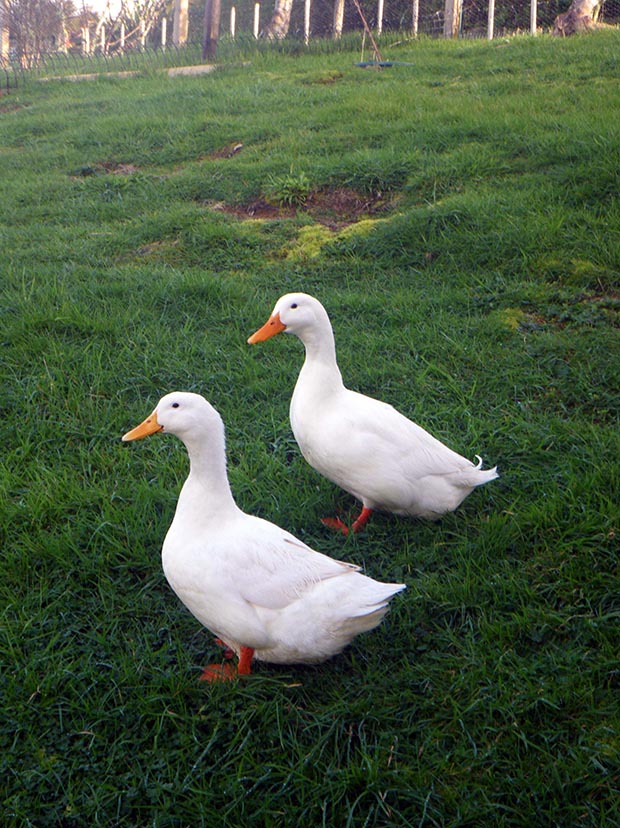
Jose and Rosita: “When Jose was young, he was tied behind a car and dragged, his skin was basically gone and he was in intensive care for weeks. Rosie was just left behind when her owners moved back to the city. They left her on her own.”
Bigger projects are more reliant on skilled volunteers who know how to do things like make concrete and build, so that they can create more rehab areas and make it safer to work during wet, muddy winter conditions.
In addition to vet bills and medication, the biggest expense that Shawn and Michael have to cover is food for the 60+ animals they can be caring for at any one time.
“We often joke we buy so much fruit and vegetables that we’re probably the equivalent to a small restaurant,” laughs Shawn. “In a week we go through 20kg of apples, 20kg of carrots, bags of grains and feed, and a lot of specialist things like boneless fish at $23.99 a kilo.” They also have some more unusual items in their fridge.
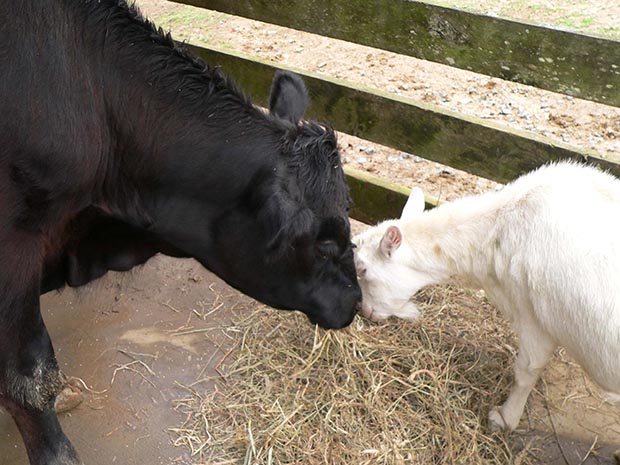
“Two years ago when we got our first ASB grant, I had to explain to them why we needed a second fridge. Fruit goes off really quickly in summer and we didn’t have enough room in our own.
“Also, you’ll see ice cream containers in our freezer but they’re not ice cream, they’re containers of dead mice for the owls!”
The hardest part of running a sanctuary is realising that you can’t save every animal or bird, and that on some days, sad things happen. “It doesn’t ever get any easier. Sometimes we have good weeks, but then there’s always sad stuff, so you’ve got to grab onto the good things you’ve accomplished.
“We’ve had lots of starving penguins come in and you do everything you can even though you know most of them won’t make it. At a certain point their internal organs have shut down. We know that if they’re under 500g they don’t make it but you fight every time. There was one penguin I really thought would make it; she was 330g and she survived a whole week, she was eating and drinking but then she died suddenly. There’s no way I didn’t cry, but the other one – Freddie – hit the magic weight of 500g, and he may be the first that came in under 500g that’s ever made it. But I’m practical and pragmatic about it too.”*
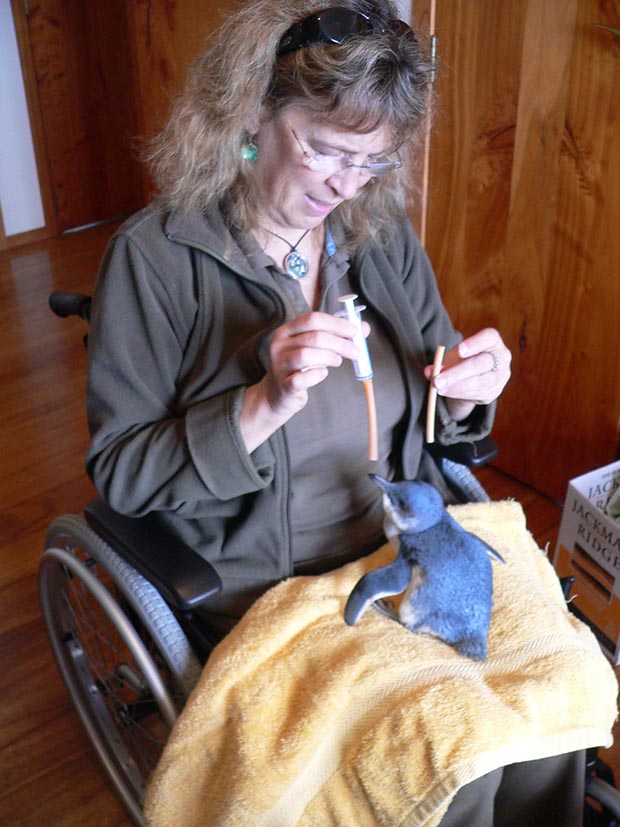
Feeding a baby penguin (Shawn had a broken ankle at the time).
The next step is to educate people so less native birds get injured in the first place. “Part of our strategy is to not be the ambulance at the bottom of the cliff so we’re moving into prevention. We tell people about making bird blockers for their windows and about the Liberator cat collar to reduce the number of native birds that are hurt in the first place.”
*Sadly, a few weeks after our interview, Freddie died from other causes.
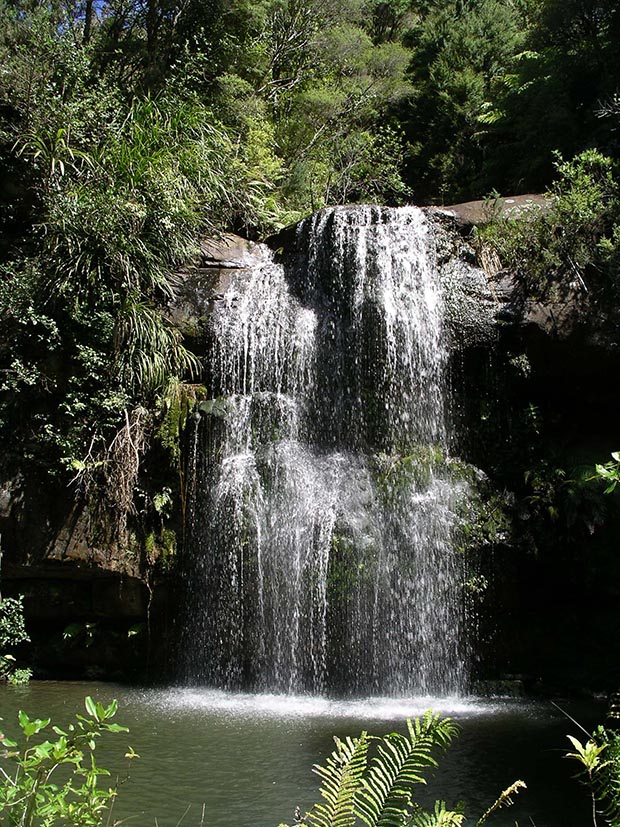
SPARKY
“That steer is the love of my life. He came here as a calf and it was horrible. He’d got his leg caught in an electric fence at four days old. It was a day and a half before anyone found him and he’d had the electric shock going through his body all that time. The wire had cut in and garrotted his leg, it was right through to the bone.
“A vet came out and recommended euthanasia but the farmer said to keep him alive until he got to his slaughter weight. The vet splinted it, said ‘change the bandages in five days’ but they never did. Sparky lived in terrible pain for three months.
“We went to rescue him and had to pay for him. A friend was so horrified, she raised $300 to help, then our vet had to come out and do more surgery.
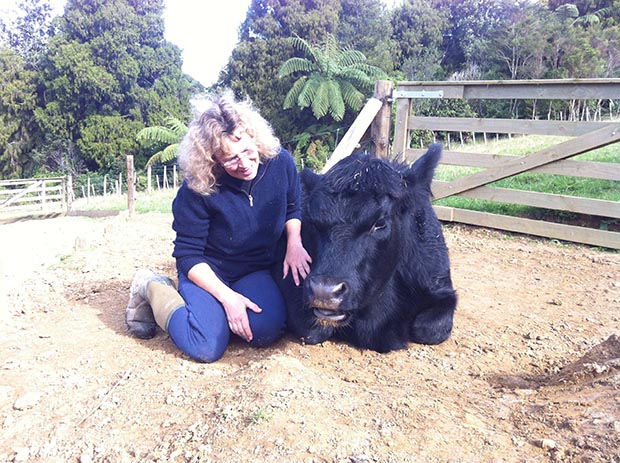
Sparky and Shawn.
“Sparky is two years old now. His leg is always going to be a problem but he can run, he roams the whole property, he prances, he jumps. Sometimes (the wound) breaks open when he hits it so we’ll be treating it for the rest of his life, but he’s such a love that he’s worth it. He’s a black Angus and they are just big puppies – I had no idea, he weighs a tonne but he acts like an affectionate puppy. These animals are so intelligent and loving, it’s wonderful.
“People are often afraid of him because he’s so big, but a few minutes later they’re wrapped around him.”
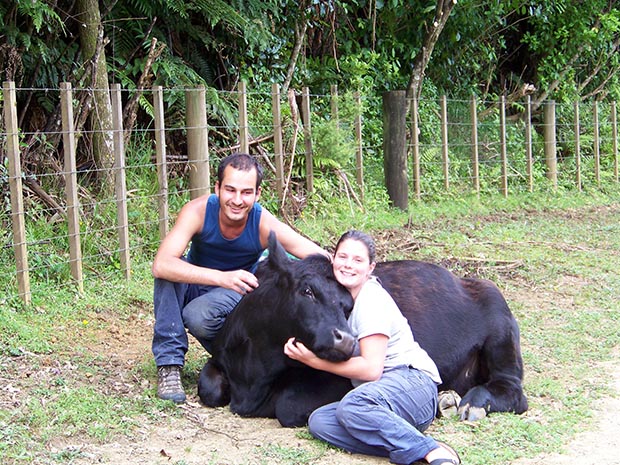
Sparky with friends.
EX-CAGE HENS
“When we got our first rescue hens it was a real eye opener for me. I was stunned, they have such personalities. We really fell in love with them.
“We don’t go out and ‘liberate’ hens in the middle of the night, it’s all legal here. We have a couple of farms that we have a relationship with so when the hens are at the point of slaughter – they’re just 18 months old – the farmers ring us.
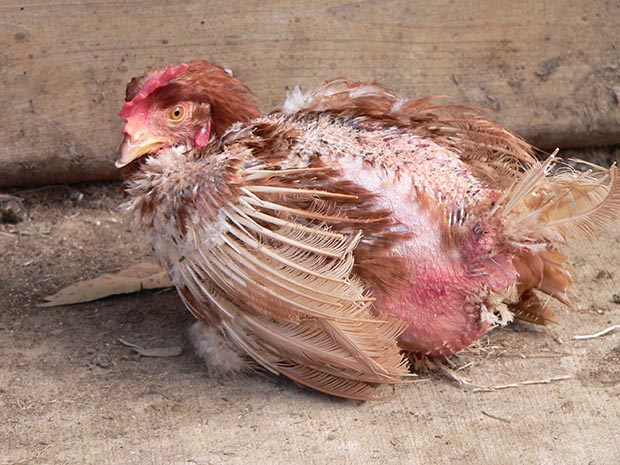
A battery hen on arrival.
“We can’t save them all but we have rescue partners in Albany and in Hamilton. Ideally we’re looking to set up hen rescue/rehab centres right across the country.
“We have a massive waiting list for adoptions. We get heaps of enquiries from Christchurch but they don’t seem to have anyone doing this down there – is anyone interested?”
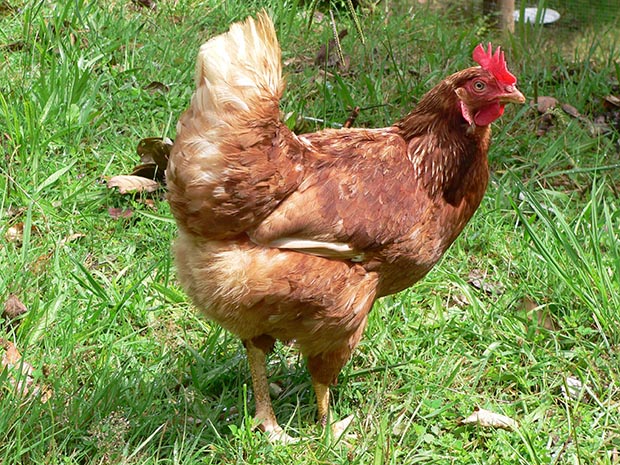
A battery hen ready for a new home.
2 THINGS EVERY LIFESTYLE BLOCK HOME OWNER SHOULD HAVE
If you own a beautiful country home with big windows that birds are always crashing into, you need a simple window ornament says Shawn. “Most people think the majority of injured native birds are caused by cats or cars, but the number one cause is glass windows. Birds cannot see glass so they suffer broken necks, concussion, shoulder damage, and spinal compression.”
Shawn encourages people to do a little DIY by hanging ‘bird blockers’ in their windows. “You just use shells or driftwood or a necklace that’s broken and thread it onto string with a space every couple of inches. It catches the light. If you need something more ‘blokey’, a friend used nuts and bolts to stop birds flying into her husband’s workshop windows. “It’s such an easy thing to do, you can make them quite pretty with prisms or crystals or whatever you like, and they really do save lives.”
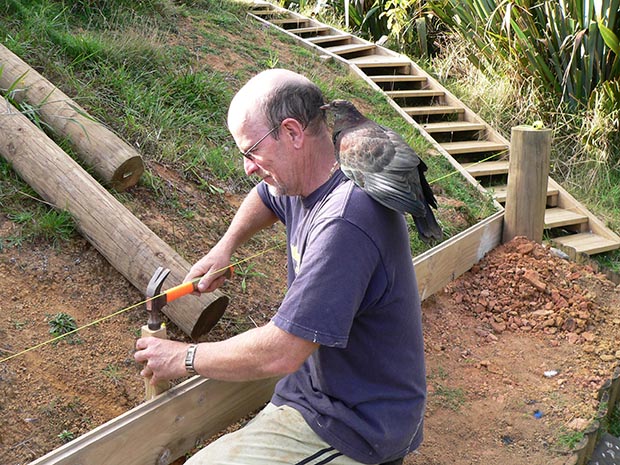
Her other suggestion is the Liberator collar for cats which the sanctuary sells on its website. “Cats learn to work around collars with bells, but this thing is silent until the cat leaps – it’s leap activated – and it emits a tiny sonar pulse which the bird can hear so it flies off. “If you don’t want native birds to be killed, get one of these collars. It won’t stop your cats catching baby birds (that can’t fly) but it will stop them getting any others, and it won’t drive you (or the cat) crazy.”
WHAT TO DO WITH AN INJURED BIRD
A lot of people are unsure what to do with an injured wild bird. “If a member of the public can walk right up to a wild bird then you know it’s really sick or really hurt. Prepare a cat cage or a large box with airholes. Drop a sheet or a towel over the bird and carefully scoop from the outsides inwards so you’re folding the wings into its body. Pick it up and put it into the box quickly. Never grab the tail.
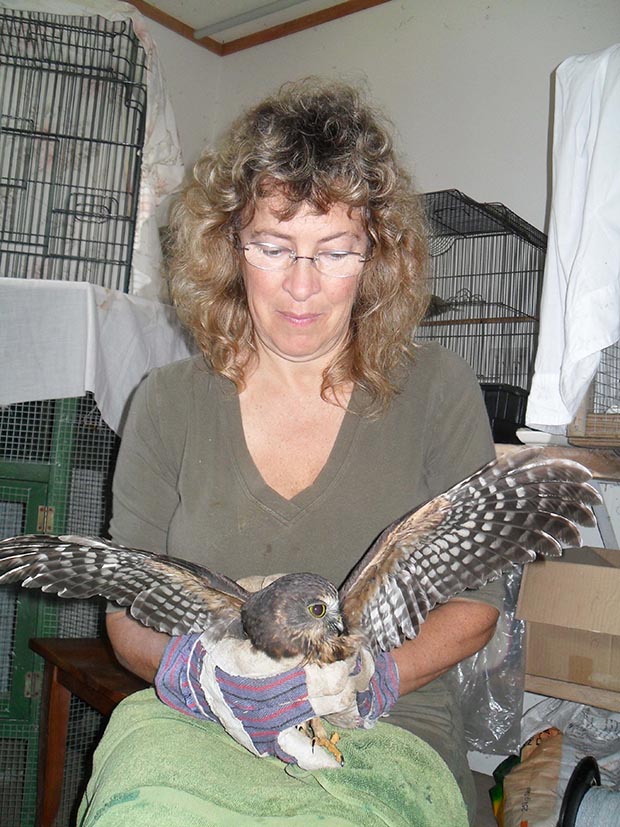
Blinky the morepork.
“People get quite upset but I assure them that it’s much better than leaving a badly injured bird to starve to death. That’s a really long, slow way to die, so even if we have to euthanize it, it’s a kindness.”
The Animal Sanctuary has a special license from the Department of Conservation to keep native birds – it’s not legal to keep them otherwise – but Shawn advises people to take an injured native bird straight to a good vet. If it can be saved, it will need x-rays and then a vet can call their local bird rescue people. If it can’t be saved, a vet will put it down humanely.
Shawn takes extra care the birds in her area are as safe as possible. “I keep rubber gloves in the car and haul dead possums off the road. It significantly reduces the number of hawks being hit by cars. Carnivores like owls and hawks also eat eat dead animals that have been poisoned and then they’re poisoned too. We give them vitamin K – people should take them straight to a vet.”
Love this story? Subscribe now!
 This article first appeared in NZ Lifestyle Block Magazine.
This article first appeared in NZ Lifestyle Block Magazine.
